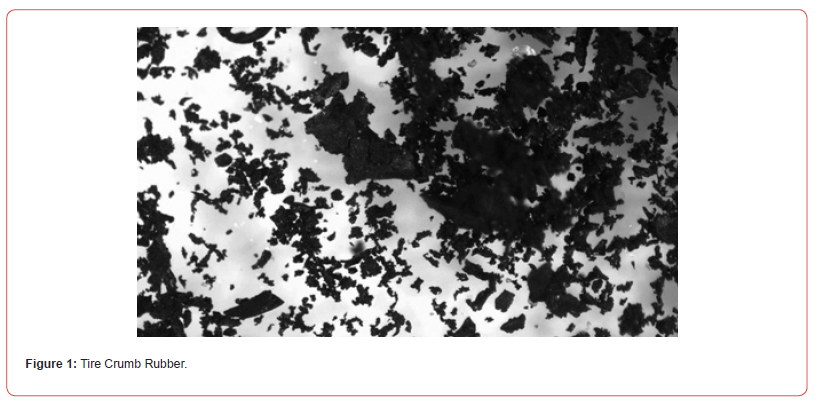 Research Article
Research Article
Fatigue Cracking in Flexible Pavements and the Option of Sustainable Techniques such as Adding Waste Crumb Rubber to Asphalt Mixtures
Dr. Ignacio Zapata Ferrero*
Department of Civil Engineering, Universidad Tecnologica Nacional Facultad Regional La Plata, Argentina
Ignacio Zapata Ferrero, Department of Civil Engineering, Universidad Tecnologica Nacional Facultad Regional La Plata, Argentina
Received Date:June 05, 2025; Published Date:July 07, 2025
Abstract
One of the main pathologies faced by flexible pavements is fatigue. This problem arises not from exceeding the final state of the material, but from the successive application of loads that progressively consume the material’s internal energy. Various research and developments have led to the use of new materials with superior performance. One of the materials to improve fatigue performance in asphalt mixtures is used tire crumb. Incorporating up to approximately 10% by weight of used tire crumb relative to the weight of asphalt significantly improves rutting properties in dense asphalt mixtures. However, little is known about the behavior at higher percentages and the aging performance of these materials. Recent studies show improved resistance to fatigue cracking in mixtures incorporating used tire crumb at percentages of 18% relative to the weight of asphalt.
Development
Among the main factors that affect pavement life in the face of fatigue pathology are the number of axle repetitions that pass through the road, pavement thickness, asphalt material used, service life, drainage conditions, among others. It is worth mentioning that when surface cracking occurs, the costs of restoring the pavement’s service life are usually high.
The main factor affected during pavement operation is the mixture’s modulus of rigidity (E). First, traffic is what causes stresses in the pavement, which, over time, will induce cracks within the asphalt mix and a decrease in the modulus due to fatigue wear. Undoubtedly, if the traffic to which the material is subjected exceeds that for which it was designed, it will fail earlier than its intended life span.
Then comes the aging of the mixture, which, with the passage of time and exposure to solar radiation, modifies the initial properties for which it was designed. Due to this effect, the aging modulus tends to increase above design levels, resulting in a stiffer mix that is therefore more susceptible to cracking.
In line with these principles, Tire Crumb Rubber (TCR) is a waste suitable for use in the asphalt paving industry. To be used, tires must be crushed to a millimeter size. This ensures that the ENT can be properly incorporated into the asphalt to form a homogeneous material that does not separate into its phases (Figure 1).

Currently, there are several alternatives for recovering the materials that make up tires. In some cases, the elastic properties of the materials involved are ignored in order to ensure proper recycling of the remaining materials.
Recycling TCR is one of the many alternatives offered by legislation around the world. In the European Union, a hierarchy has been established for the treatment of non-recyclable materials (NRE), with recycling ranked third, after prevention and reuse. A consolidated program in this regard is SIGNUS Ecovalor in Spain, which has regulated the treatment of NRE (SIGNUS, 2017). Similarly, in the United States, approximately 300 million NRE units are generated annually, according to the Rubber Manufacturers Association (2016).
In 2017, an average of 135,000 tons of tires were discarded in Argentina per year, of which only 8% were adequately treated through reuse, recycling, or burning in cement kilns. The current estimate for NRE generation is 135,000 to 150,000 tons per year. Figure 2 shows a crusher line used to obtain different sizes of used tire crumb, along with the available stockpiles.

Currently, asphalt mixtures are being developed that include used tire crumb in high proportions. Modified materials are obtained with 18% of the asphalt weight for conventional mixtures and up to 22% for open mixtures. The results obtained from static indirect tensile tests show performance predictions above 20% when compared to standard samples containing unmodified asphalt. This results in a material that performs more than adequately for use in road structures.
-
Dr. Ignacio Zapata Ferrero*. Fatigue Cracking in Flexible Pavements and the Option of Sustainable Techniques such as Adding Waste Crumb Rubber to Asphalt Mixtures. Cur Trends Civil & Struct Eng. 12(1): 2025. CTCSE.MS.ID.000771.
-
: Fatigue Cracking; Flexible Pavements; Asphalt Mixtures; Waste Crumb Rubber
-

This work is licensed under a Creative Commons Attribution-NonCommercial 4.0 International License.






